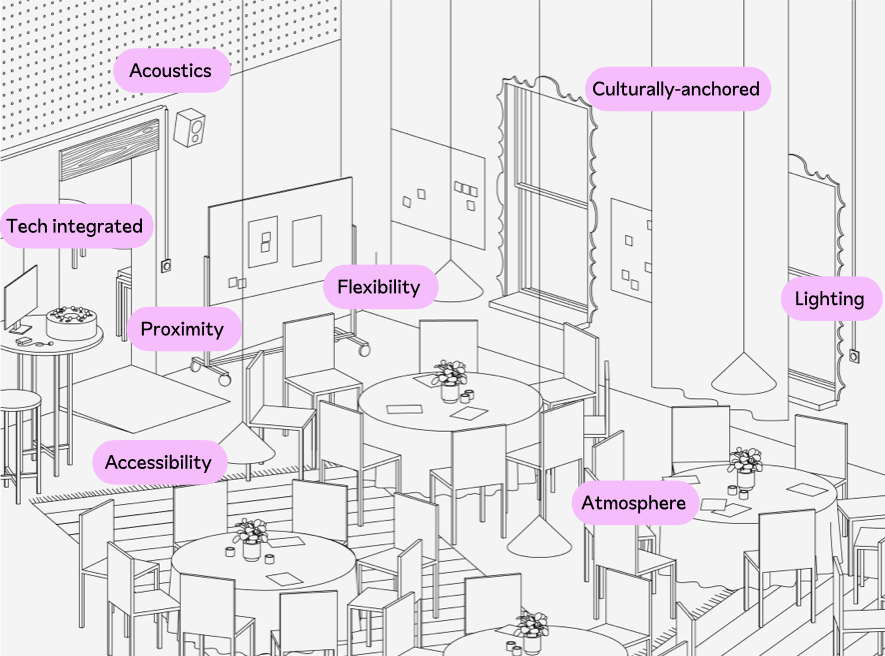On 10th April 2025, we held an online launch event with the authors and three of the contributors interviewed for the paper:
Watch it here!Rather than universal prescriptions, we need a plurality of possible alternative spatial designs for our political spaces in addition to existing ones.
Abstract
As citizens’ assemblies and other forms of citizen deliberation are increasingly implemented in many parts of the world, it is becoming more relevant to explore and question the role of the physical spaces in which these processes take place.
This paper builds on existing literature that considers the relationships between space and democracy. In the literature, this relationship has been studied with a focus on the architecture of parliament buildings, and on the role of urban public spaces and architecture for political culture, both largely within the context of representative democracy and with little or no attention given to spaces for facilitated citizen deliberation. With very limited considerations of the spaces for deliberative assemblies in the literature, in this paper, we argue that the spatial qualities for citizen deliberation demand more critical attention.
Through a series of interviews with leading practitioners of citizens’ assemblies from six different countries, we explore what spatial qualities are typically considered in the planning and implementation of these assemblies, what are the recurring challenges related to the physical spaces where they take place, and the opportunities and limitations for a more intentional spatial design. In this paper, we synthesise our findings and formulate a series of considerations for the spatial qualities of citizens’ assemblies aimed at informing future practice and further research.

This preliminary study of the spatial qualities of citizens’ assemblies reveals three main findings derived from interviews and collected image documentation of discussed assemblies :
Based on our research and analysis, we have identified eight spatial qualities that are important to take into account with intention when designing deliberative assemblies: lighting; acoustics; connectivity; symbolic value; flexibility; atmosphere; access, and technology. These form an initial list of considerations in current practice:
The findings of this study offer empirical insights into the spatial realities of in-person citizens’ assemblies as they take place today and the related choices made by conveners and facilitators. Comparing our findings on the spatial qualities discussed in literature about parliaments and spaces for representative democratic politics, we see that while there is sometimes a desire to imitate or even use spaces of representative democratic institutions, there is, for the most part, an effort to break away from them.
We have identified a number of paths for further research that should be pursued:
The authors would like to thank the people who have contributed their time to meet with us to share their experience and knowledge on designing and implementing citizens’ assemblies. Their input was fundamental to the analysis and reflections included in this paper.
Contributors included:
Gustav Kjær Vad Nielsen is a Danish architect, researcher, activist, and artist. He is currently pursuing a PhD in Architecture and Political Geography at the Chair of Urban Regeneration, Université du Luxembourg as part of a research project funded by the public administration of The City of Esch, which investigates the social infrastructures supporting democratic spatial politics in Southern Luxembourg. His work focuses on ontologies and materialities of politics and in/justice in transforming urban-rural environments.
James MacDonald-Nelson is the Cities Programme Lead at DemocracyNext. James is a designer with degrees in landscape architecture, urbanism, and global development studies. Having studied and worked in spatial practice for 10 years in Canada and Europe, James has a deep knowledge of how the built environment is transformed and managed - and how often citizens are left out of these processes. At DemocracyNext, James is responsible for all things city-related.
Nielsen, Gustav Kjær Vad and McDonald-Nelson, James (2025). “Spaces for deliberation: Eight spatial qualities for designing deliberative assemblies”, DemocracyNext.